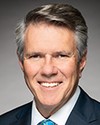I don't think we have any time left.
Do you have two minutes left for me, Mr. Chair?
Evidence of meeting #3 for Natural Resources in the 44th Parliament, 1st session. (The original version is on Parliament’s site, as are the minutes.) The winning word was program.
A video is available from Parliament.
Bloc

Mario Simard Bloc Jonquière, QC
I don't think we have any time left.
Do you have two minutes left for me, Mr. Chair?
Bloc

Mario Simard Bloc Jonquière, QC
I do have some time left. Is that right?
I have a quick question for Mr. Gorski.
Liberal
NDP

Charlie Angus NDP Timmins—James Bay, ON
Well, if you're going to give my colleague from the Bloc his two minutes, but then you're not going to give it to me, I don't think that's fair.
Liberal
NDP

Charlie Angus NDP Timmins—James Bay, ON
We'll go with two minutes. I think it's fair if we're going to finish off a round.
Bloc

Mario Simard Bloc Jonquière, QC
I will ask a very quick question so that Mr. Angus has a chance to speak.
Mr. Gorski, you said that you have made some recommendations to Natural Resources Canada and, in your opinion, the emissions reduction fund has achieved some of its objectives.
That does not really fit with what the commissioner of the environment and sustainable development told us, and for one simple reason. My impression is that, if we want to reduce methane emissions, the first thing we have to do is not increase oil and gas production.
According to the commissioner's report, more than two‑thirds of the projects that were accepted, 27 projects out of 40, would result in increased production. So I do not see how the objectives of the program can have been achieved if oil and gas production increased, since that goes hand-in-hand with an increase in methane emissions. Could you explain those nuances to me?
Senior Associate, International Institute for Sustainable Development
I think the objectives of the ERF, as I understand them—and I'm not here to apologize for the ERF or support it in some blanket form—were to decrease methane emissions, so I'm judging it on its effectiveness in doing that.
The covered operations may well have increased—
Bloc

Mario Simard Bloc Jonquière, QC
I am sorry, Mr. Cosbey. The question was for Mr. Gorski and was about his presentation.
Senior Associate, International Institute for Sustainable Development
That's what I thought, okay.
Director, Oil and Gas, The Pembina Institute
Apologies, I was on mute.
To follow up on what Mr. Cosbey was saying, you know the program was designed to reduce methane emissions. I don't think there's ample evidence in the commissioner's report that the program itself was what led to increased production. Therefore, really we should be judging the program on whether it reduced methane emissions above and beyond the regulations. The information we've seen so far is that over 97% of the funds went to eliminating methane, which is more than the regulations require.
Liberal

The Chair Liberal John Aldag
We're going to stop there and go over to Mr. Angus for his last couple of minutes.
NDP

Charlie Angus NDP Timmins—James Bay, ON
Thank you.
I want to congratulate you, Chair, on being such an excellent and fair chair. In light of that, I'm going to invite my colleague next to me to take my question.

Mike Morrice Green Kitchener Centre, ON
Thank you.
My question is for Mr. Cosbey, specifically with respect to the additionality that the commissioner calls out in his report. If we're going to talk about reducing methane emissions, it needs to be net new emissions that are above and beyond what would have already happened.
Mr. Cosbey, could you just restate this for the record? Comparing investing more funds—which the last time around weren't proven to be additional to what would have already happened—to increasing regulations, which is a more effective way to reduce methane?
Senior Associate, International Institute for Sustainable Development
As I said, the ideal solution is strong regulation. Then you don't have to worry about additionality. You don't have to worry about the lines of causation that run from your funding to emissions reductions. Reductions happen.
In the absence of those strong regulations, we see a role for a program like the ERF, but of course there are risks that it will go to funding projects that would have happened anyway or to supporting reductions that would have been taken to comply with existing regulations.
We see that the third intake has, in our view, made brave attempts to deal with those two risks. I think it has done so in a way that meets the reasonable standard of expectations.
Green

Mike Morrice Green Kitchener Centre, ON
Thank you to the chair for his fairness, and to my colleague for the chance to get a question in. I appreciate that.
I would again articulate the need to invest funds in the just transition for workers.
Thank you.